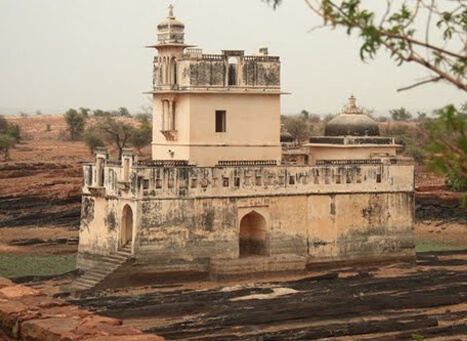Padmini’s Palace, Chittorgarh: A Tale of Beauty, Bravery, and Betrayal
Located within the historic Chittorgarh Fort in Rajasthan, Padmini’s Palace stands as a hauntingly beautiful symbol of Rajput pride, sacrifice, and resilience. It is deeply entwined with the legendary story of Rani Padmini, a queen celebrated for her extraordinary beauty and her tragic but heroic end. This palace is not just a monument of stone and mortar but a timeless testament to the fierce spirit of Rajputana.
Historical Background
Padmini’s Palace is named after Rani Padmini (or Padmavati), the wife of Rawal Ratan Singh, the ruler of Mewar in the 13th century. The earliest known reference to her comes from the epic poem Padmavat, written by the Sufi poet Malik Muhammad Jayasi in 1540 CE. While historians continue to debate the factual accuracy of the poem, the story has become an integral part of Rajasthani folklore and Indian history.
The palace gained notoriety due to the siege of Chittorgarh by Alauddin Khilji, the Sultan of Delhi. Enamored by tales of Padmini’s unmatched beauty, Khilji laid siege to Chittorgarh in 1303 AD with the intention of possessing her. According to legend, he was allowed a glimpse of her reflection in a mirror inside the palace, which only intensified his obsession.
When it became evident that the fort would fall, Rani Padmini and hundreds of other women chose jauhar—a mass self-immolation—over surrender and dishonor. This act of defiance and courage turned Padmini into a symbol of unwavering valor and dignity.
Architectural Layout
Padmini’s Palace is located within the southern part of the Chittorgarh Fort complex, surrounded by a lotus pool. It is a three-story white structure with a central pavilion, built in traditional Rajput style. The palace is modest in size compared to other royal residences but exudes elegance and grace.
The most fascinating feature is the central water tank surrounding the palace. A narrow causeway leads to the queen’s chamber. The strategic placement of the structure in the water gave it both aesthetic appeal and a defensive advantage.
From one particular pavilion in the palace, visitors can view the place where, according to legend, Khilji caught a glimpse of Padmini’s reflection through mirrors—making it one of the most dramatic moments associated with the palace.
Symbolism and Legacy
While the historical authenticity of the events may be debated, the cultural and emotional resonance of Padmini’s story remains powerful. The palace and the tale associated with it are deeply rooted in Rajasthani pride and honor. Rani Padmini’s choice of death over dishonor is commemorated every year during the Jauhar Mela held at the fort.
The story of Padmini has inspired countless retellings in literature, theatre, and films, including the recent Bollywood film Padmaavat (2018), which brought renewed attention to the palace and its tragic queen.
Visiting Today
Padmini’s Palace, part of the UNESCO World Heritage Site of Chittorgarh Fort, attracts history enthusiasts, architects, and tourists from all over the world. The palace, though now weathered by time, retains its aura of serenity and melancholy. The lotus pool, the intricate Rajput architecture, and the tales whispered by the stone walls create an immersive experience for visitors.
One can explore not just the palace but the entire Chittorgarh Fort, which is among the largest forts in India and houses other significant monuments like Rana Kumbha Palace, Vijay Stambh, and Kirti Stambh.
